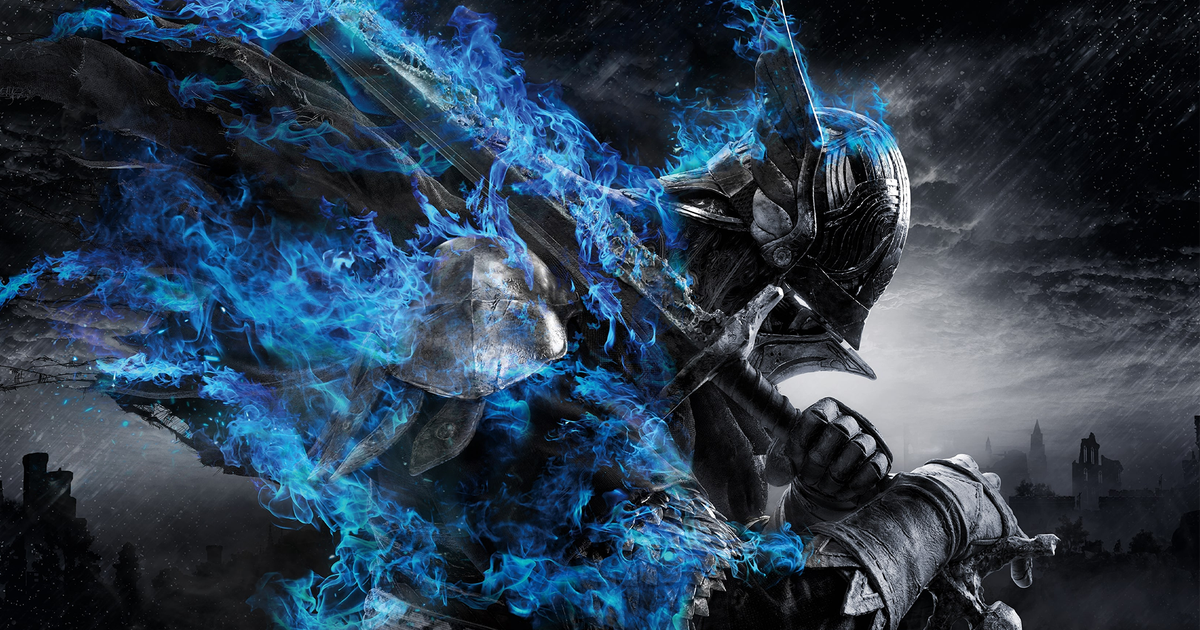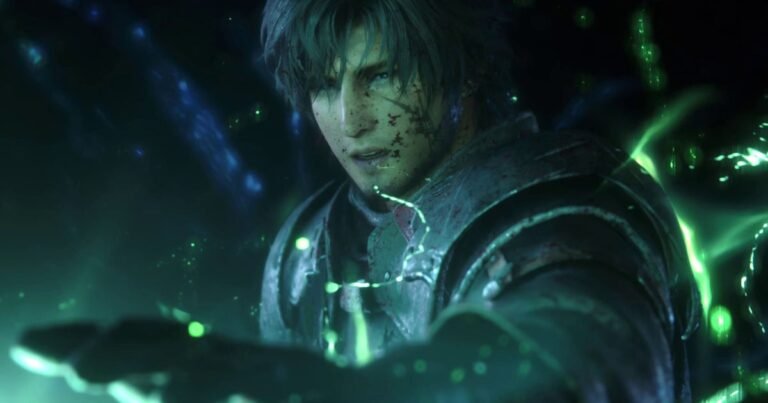
After a brief beta version on the network back in February, we now have the final version of Elden Ring Nightreign, giving us a new opportunity to evaluate the console versions. To cut to the chase, there are good and bad news for console users. The positive side comes down to Nightreign’s winning game design because, against all odds, the multiplayer spin-off from FromSoftware works surprisingly well. Aside from network latency issues in the first week – causing delays in NPC reactions after an attack – this is a well-crafted game, inspired by Fortnite, in Elden Ring. The combat mechanics are immediately familiar, with plenty of strategic depth when you spend an hour leveling up in anticipation of a Night Lord boss. It requires repeated attempts and, crucially, rewards a trio of players who coordinate their character builds to the end.
The downside is the state of Nightreign’s technology. It’s nothing new for those familiar with FromSoftware’s Elden Ring engine and how it performs on consoles. Its optimization on PS5 and Xbox Series machines remains disappointing, with the game still not hitting the intended 60 frames per second while exploring the Limveld map. Furthermore, there is no support for PS5 Pro. The PlayStation Store page makes no mention of improvements for Pro hardware, even at launch, and this is confirmed in our tests, where there are no extra modes or optimizations of any kind. It simply runs the base PS5 code, which, as mentioned earlier, brings some benefits in terms of frame rate and image quality, depending on the graphic mode you use. Finally, it’s worth noting that the ray tracing mode – included in the main Elden Ring game to allow RT shadows and environmental occlusion – is still absent in Nightreign, which is a shame.
In terms of console comparison, FromSoftware maintains the tried and tested settings from the beta network version. The PS5, PS5 Pro, and Series X run at a fixed 4K resolution in their quality modes, while the frame rate mode uses a dynamic setting that lowers the resolution to 1440p to achieve 60 fps. On the other hand, for the Series S, 1440p is a fixed target in its quality mode, while the frame rate mode allows a range from 1008p to 1440p to improve performance. In addition to resolution differences, all machines run with identical settings, with a few exceptions. Firstly, comparing the PS5 and PS5 Pro, the PS5 Pro has a slight advantage in image quality. By running the base PS5 code on more powerful hardware, the PS5 Pro tends to reach higher numbers in the 1512p to 4K range. On average, it tends to be higher, although this only applies to the frame rate mode, of course, while shadows, textures, and world design are identical.
Secondly, the Xbox series consoles show a greater visual quality split. The 4TF Series S inevitably suffers a greater visual downgrade compared to the Series X: it runs with lower resolution global shadows, as well as reduced ambient occlusion definition – affecting shading under the grass. The most noticeable, of course, is the drop to a 1440p target. Honestly, the result is still more than acceptable for the Series S, and using the opening tutorial area to match the time and day, you’re getting the full Nightreign experience.
In fact, this is a much better scenario than last-gen releases. Taking the base PS4 as an example – which was not available for testing in the beta network – Nightreign’s overall gameplay suffers significantly from not playing on the latest wave of systems. On the PS4, shadow quality and vegetation density decrease significantly compared to the PS5. It typically runs at 900p (lower than the 1080p found in the main Elden Ring game), and performance is significantly worse than the base game as well. It aims to reach 30 fps with an irregular frame rate, although in practice, the range is 20-30 fps, with much gameplay typically in the middle.
Moving on to current-gen performance tests, unfortunately, there has been no significant improvement since the beta network four months ago. Using the base PS5 quality mode, for example – with a fixed 4K resolution value – we still have a frame rate of 35-50 fps while roaming around the Roundtable Hold. Actual combat in Limveld tends to be even more demanding, but the hub area gives us a perfect way to compare conditions between the beta network version and the final version. It’s a virtually identical read, although there is one curious exception: parts of this central area have been altered, opening up new areas in the final game and adding extra light points and volumetric fog in a room. As a result, performance in this specific location drops from 45 fps in the beta network version to 39 fps in the final version, which is expected given the increased load.
Overall, using the Roundtable Hold, there has been no proven improvement or decrease in performance since the beta version. Moving on to the PS5 Pro, the comparison of network testing with the final version shows the same issue, although the Pro has always been much closer to the 60 fps mark in quality mode.
Ultimately, using the quality mode doesn’t make practical sense on consoles. The base PS5, in a typical open-world game, runs at 30-45 fps, with drops to 20 fps possible when falling from the sky. You won’t even see a flash of 60fps when looking directly up to theoretically lighten the GPU load. The Xbox Series X follows the same trend, with a similar reading to the base PS5 – 30-45 fps with potential drops if you use the quality mode – making it a moot option. Meanwhile, the Series S runs at a much more restrictive range of 30-40 fps, essentially staying around 30 fps for most of a round, with drops to the 20s. And finally, the PS5 Pro reaches 40-60 fps, which, although an improvement over the rest of the console quartet, is still outside the ideal VRR range to mask the drops.
This isn’t enough, and the fixation on 4K resolution – as sharp and clear as it may be – doesn’t justify this performance penalty. In a comparison across all consoles in a paired tutorial, the PS5 Pro performs the best with a reading of 47 fps, while the PS5 and Series X fall in the middle with 35 fps and the Series S lags behind at 32 fps.
The easiest mode to recommend remains the frame rate mode. The base PS5 runs between 40-60 fps, which still doesn’t quite fit into the ideal VRR range. The long gameplay passages, especially in the final moments of a round, approach the lower limit and visibly fluctuate towards 40 fps. The Series X has the exact same range, but since Xbox consoles have a wider VRR window to work with (40-60Hz, compared to 48-60Hz on PS5 consoles), there is some flexibility for adaptation. The result is a much smoother experience with fewer visible stutters – if your screen supports VRR. Even the Series S benefits in this regard, with much of its performance running between 40-60 fps, keeping pace with the other machines.
Lastly, the PS5 Pro. To its credit, the Pro hardware produces a range of 50-60 fps most of the time, which fits perfectly into the VRR range named by Sony. The only issue is the abrupt fluctuations to 40 fps during exploration of Limveld, which occur more frequently in some rounds than others and stand out clearly. In comparative tests, using our Roundtable Hold route, the PS5 Pro theoretically has an advantage with a greater adherence to the 60 fps target, while the PS5 and Series X fall slightly below, and the Series S stays around 50 fps.
Even with the final version of Nightreign in hand, there is still much to be desired in terms of technical performance. The remixing of Limgrave locations to forge Limveld creates a perfect playground for its short one-hour online experience – but performance on current-gen consoles remains lacking. My recommended choice is the frame rate mode, ideally on an Xbox Series system where VRR is more flexible to handle a range of 40-60 fps. Meanwhile, the PS5 Pro achieves the best theoretical frame rates simply by running the base PS5 code on a more powerful GPU – but it’s a disappointment and there is no official patch for the Pro.
This sets a worrying precedent for a new release that completely neglects Pro hardware, and even though it’s a major game release, I expected more. I hope that FromSoftware will consider the idea, as many of their games could benefit from Pro support, but Nightreign is not the breakthrough moment. The state of things with the final release is unfortunately as we left it in the network test: unquestionably enjoyable – a wild mix of ideas that somehow connect. But, regardless of the console or mode, achieving 60fps performance is often out of reach.



